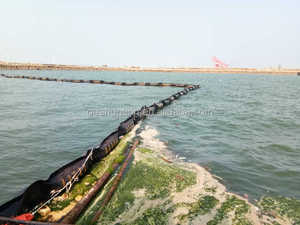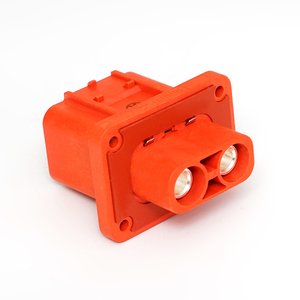
All categories
Featured selections
Trade Assurance
Buyer Central
Help Center
Get the app
Become a supplier

(553 products available)




















Boom fiber optic connectors ensure high-speed, seamless data transmission. These are essential in sectors like telecommunications and computer networks, where quick data movement is needed. These connectors also resist signal loss over long distances, making them practical for large areas. As more businesses go digital, the need for these connectors grows. They allow for quick and clear data transfer, which boosts overall productivity and efficiency.
Boom hydraulic connectors link fluid power systems with tools or parts. In construction or industrial zones, where hydraulic machinery needs to operate nonstop, these connectors are vital. Their strong and dependable build guarantees the safe movement of fluids under pressure. This keeps the machines operating effectively and securing the heavy-duty tasks they were designed for. The reliability of hydraulic boom connectors means less downtime and higher performance in demanding work environments.
Electrical live connectors connect electrical systems while also ensuring safe and smooth current flow. They are widely used in sectors that depend on electrical-powered cranes and lifting devices. By ensuring strong electrical connections, these connectors enhance the machines' ability to perform efficiently. As the demand for electric-powered machines rises, so does the importance of electrical boom connectors. They not only increase energy efficiency but also lower the risk of system failures.
It is good to install the boom connectors correctly to avoid any malfunction. It is recommended to read the manufacturer's guide while installing the connector. If the guide is unavailable, here are the steps to install the connector:
A fiber optic boom connector efficiently links fiber optic cables. The connector helps large network systems by reducing data loss over long distances. It is essential in telecom zones where data speeds are crucial.
Multi-core cable connectors, like fiber optic boom connectors, are useful for testing purposes. They enable quick connections when checking cable systems in the field. This speeds up the testing and repair of the current networks. They are helpful for telecom or tech teams who manage a lot of network issues.
Many industrial operations use hydraulic boom connectors to monitor heat and pressure. These connectors help sensors connect to hydraulic systems for far-off reading. It eliminates the need to go up to the machine and check. This speeds up the diagnostic process.
Hydraulic power tools connect easily to boom pistachio connectors. These connectors transfer fluid power from the machine to the tool. This enables the tools to perform the toughest tasks. It is vital in building places where the work needs a lot of resources.
Many hydraulic and electric tools conductors have electrical boom connectors. These connectors link electrical systems to cranes and lifting tools. They transmit electric power for lifting and moving uses. Their role is most important in logistics or manufacturing industries, where quick movement is a must.
Some boom pump hose connectors allow the remote monitoring of hydraulic systems. This is especially true in tough-to-reach areas. By fitting sensors through the connectors, operators can check hydraulic fluid levels and system pressure from a distance. This helps identify issues early, reducing downtime and improving efficiency during fieldwork.
Different boom connectors serve varied needs. Hydraulic boom connectors expertly handle high-pressure fluid systems. But, electrical boom connectors are for linking electrical systems. Knowing what each type does ensures the right connector is chosen for the task.
The load capacity of the connector should match the system's requirements. For example, a hydraulic boom connector for construction should handle high loads. Whereas, a simple electrical connector needs less load. Pick the one that matches the task.
The material used for the boom connector impacts its durability. Steel connectors are strong and heavy-duty. This makes them ideal for tough work. Aluminum connectors are lightweight, making them suitable for mobile machines. It is necessary always to check which material the boom connector is made out of.
The environment where the connector is placed demands one that is durable. For instance, a hydraulic connector in a stormy zone must resist both rust and corrosion. So, one used in extreme weather should be weather-hardened. Opt for a connector designed to easily endure the typical stresses in its setting.
The connector one may wish to buy should be compatible with other system components. These connectors work with specific hydraulic systems or tools. So, it is important to select one that fits the existing equipment. This will ensure seamliness of the system.
Go for connectors that are easy to install and maintain. Some are designed for simple fitting or include self-maintaining features. This helps lessen the need for regular checks and enables fast replacing if needed.
A1: Boom connectors link different systems, like fluid, electrical, and fiber optics. They are vital for transmitting data, power, and fluids in various industries. These connectors help the systems work smoothly and reliably.
A2: Boom connectors have several common parts. They include the body, which is the main part; sealing, which helps prevent leakage; coupling mechanism, which is for attachment; and interface. The interface is the part that fits with other components.
A3: Most hydraulic boom connectors are made of strong metals like steel, brass, or aluminum. Steel offers great strength. On the other hand, brass resists corrosion. Aluminum is lightweight yet very strong, which makes it ideal for many uses.
A4: If a connector shows signs of wear and tear, like cracks, rust, or strange noises, it could be faulty. Also, if there are slowdowns in the system or leaks, that is a sign of damage. Catching issues early can prevent larger problems.
A5: Yes, some boom connectors are designed to work in harsh conditions. Connectors with special coatings or materials can handle heat, cold, or chemical exposure.